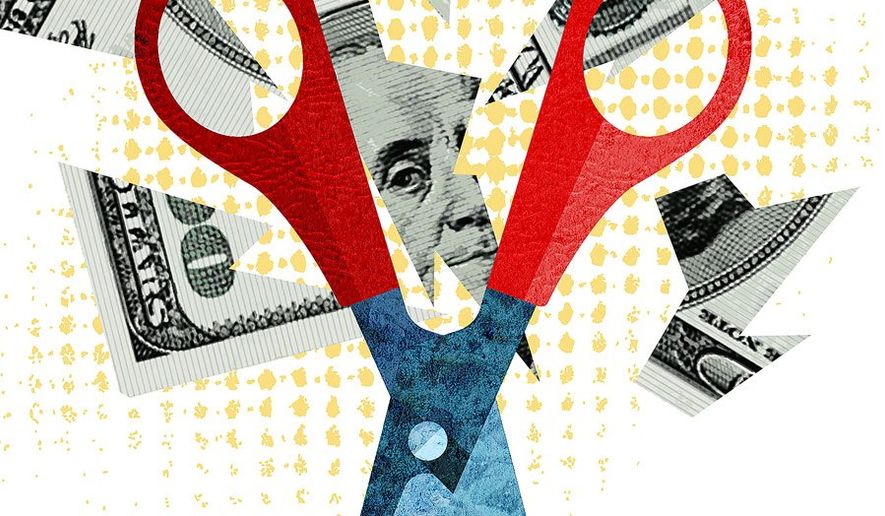OPINION:
I’ve been shouting from the rooftops for six months that the Federal Reserve is too tight on money, and that this lack of dollar liquidity has cut into growth. So it is somewhat vindicating that Fed Chairman Jerome Powell seems to finally coming around to that idea. The betting markets are now predicting at least one rate cut this year and perhaps two.
Here’s the problem. Once again, the Fed board has stumbled upon the right conclusion for the wrong reason. Its rhetoric and tortured logic confuses everyone.
The reason to cut interest rate targets (and the interest the Fed pays on bank reserves) is that prices are falling for most commodities and many consumer goods. For four months running, the inflation rate has been below the Fed’s own stated target of 2 percent. The lower interest rates on some longer term bonds than shorter term bonds (the so-called “inverted yield curve”) is not a signal of recession, but of deflation worries by investors.
But Fed Chairman Powell and others on the board of governors keep saying that they feel compelled to cut interest rates to reverse the negative economic impact of tariffs and because “economic growth may be slowing.” Yes, tariffs are hurting the economy, and, yes, the growth rate for the second quarter of 2019 is now estimated to be running at less than 2 percent. That’s concerning.
As my former colleague at The Wall Street Journal, George Melloan, pointed out last week, the Fed can’t “undo the damage of tariffs by printing money.” So it shouldn’t try. As Larry Kudlow, the president’s chief economist, puts it: “The Fed can print money, but it can’t print jobs.”
Too many economists inside and outside the Fed still don’t get this. Just last week, Larry Summers, the former chief economist for presidents Bill Clinton and Barack Obama, argued that the Fed should weigh “the benefits of supporting the economy need to be weighed against the risks of allowing inflation.” In other words, he believes there is an inflation-employment trade-off.
This cockamamie Phillips Curve illogic that too much growth causes inflation and that the cure for slow growth is printing more money, just won’t go away. That’s why we continually see bewildering headlines that read “Growth Worries Spur the Fed to Lower Interest Rates.”
All we have to do is go back to last summer, when growth reached nearly 4 percent and yet this prosperity burst was not accompanied by higher prices. Trump tax cuts and deregulation have increased the supply of goods and services, which means lower, not higher prices. The same thing happened after the Reagan tax cuts in 1981. The economy boomed with growth rates as high as 6 percent and 7 percent and prices fell from the raging 14 percent inflation rates under Jimmy Carter to 3 percent to 4 percent throughout the 1980s.
The performance of the real economy is dictated by policy changes, technology, innovation, labor force growth and so on. The Fed interest rate changes and open market operations control the price levels not real economic output.
The Fed economists are fixated on the belief that by simply printing money it can increase growth, which is plainly and dangerously wrong. This is what the Fed tried to do to reduce unemployment in the 1970s, and we didnt get jobs, we got the runaway inflation.
More recently, Venezuela and Zimbabwe have tried to create prosperity by printing money and it only added to their economic miseries.
So, yes, the Fed should cut rates now — and it should have done so months ago — because prices are falling in many sectors. Better late than never. There is no sign of inflation anywhere in the economy today.
Restoring stable prices by increasing dollar liquidity at a time when the whole globe wants dollars can erase the threat of deflation and raise growth rates by as much as half a percentage point — which is a lot. Since most of the rest of the world is effectively pegged to the dollar, a more stable dollar will help stimulate moribund growth rates in nations around the globe.
Mr. Trump is right to try to drain the Fed board of economists who are still peddling dead Keynesian ideas about money. Sound money and a stable dollar on top of the prosperity-enhancing effects of deregulation and tax cuts can give us 3 percent to 4 percent growth with no inflation for as far as the eye can see.
Just what is Jerome Powell so afraid of?
• Stephen Moore, a columnist for The Washington Times, is a visiting fellow in economics at the Heritage Foundation and an economic consultant with Freedom Works.




Please read our comment policy before commenting.